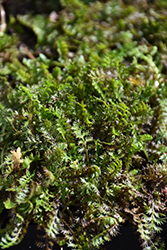It's all about ...
plants

Verdigris Brass Buttons
Leptinella potentillina
Plant Height: 1 inch
Flower Height: 2 inches
Spacing: 8 inches
Sunlight:
![]()
![]()
Hardiness Zone: 4a
Description:
This quickly spreading groundcover features runners of ferny, pewter variegated foliage; leaves will tolerate some foot traffic; neither flowers or fruit are particularly ornamental; great as edging or between patio pavers; a durable lawn substitute
Ornamental Features
Verdigris Brass Buttons' attractive tiny ferny compound leaves emerge light green in spring, turning grayish green in colour with showy silver variegation and tinges of coppery-bronze throughout the season on a plant with a spreading habit of growth.
Landscape Attributes
Verdigris Brass Buttons is a dense herbaceous perennial with a ground-hugging habit of growth. It brings an extremely fine and delicate texture to the garden composition and should be used to full effect.
This is a relatively low maintenance plant, and can be pruned at anytime. Deer don't particularly care for this plant and will usually leave it alone in favor of tastier treats. It has no significant negative characteristics.
Verdigris Brass Buttons is recommended for the following landscape applications;
- Mass Planting
- Rock/Alpine Gardens
- General Garden Use
- Groundcover
Planting & Growing
Verdigris Brass Buttons will grow to be only 1 inch tall at maturity extending to 2 inches tall with the flowers, with a spread of 14 inches. When grown in masses or used as a bedding plant, individual plants should be spaced approximately 8 inches apart. Its foliage tends to remain low and dense right to the ground. It grows at a medium rate, and under ideal conditions can be expected to live for approximately 8 years. As an herbaceous perennial, this plant will usually die back to the crown each winter, and will regrow from the base each spring. Be careful not to disturb the crown in late winter when it may not be readily seen!
This plant does best in partial shade to shade. It does best in average to evenly moist conditions, but will not tolerate standing water. It is not particular as to soil type, but has a definite preference for acidic soils. It is highly tolerant of urban pollution and will even thrive in inner city environments. This species is not originally from North America. It can be propagated by division.
This plant is not reliably hardy in our region, and certain restrictions may apply; contact the store for more information.
